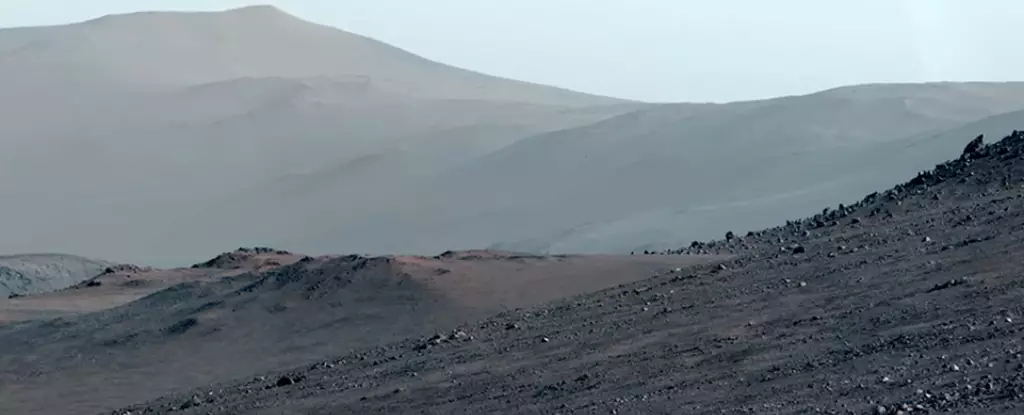In 2018, NASA’s mission planners made a critical choice by selecting Jezero Crater as the future landing site for the Perseverance rover. This decision stemmed from Jezero’s unique geological history, as it once housed an ancient lake, a feature evidenced by the delta fan formation at its western edge. Such delta structures are indicative of flowing water, demonstrating a history of sediment deposition on Earth and suggesting similar processes on Mars. The presence of clays within Jezero’s delta fan further enhances its significance as a prime target for searching for biosignatures—traces of past life that could still exist. The selection of Jezero Crater was not just a matter of convenience; it was a strategic choice aimed at unlocking the secrets of Martian history and the potential for life beyond Earth.
In exciting recent updates, NASA reported that Perseverance successfully ascended to Lookout Hill, an important vantage point at the edge of Jezero Crater. Over three and a half months, the rover climbed 500 vertical meters (1,640 feet), marking a significant engineering achievement. This journey not only tested the rover’s capabilities but also allowed scientists to gather crucial observational data about the Martian landscape. Following this milestone, the rover is set to embark on what is termed the Northern Rim campaign, a phase designed to delve into previously unexplored geological formations that promise to yield rich scientific insights.
Charting New Geological Terrains
Perseverance’s Northern Rim campaign involves an ambitious plan to traverse approximately 6.4 kilometers (4 miles) over the coming year, visiting up to four locations that hold intrigue for geological studies. Since its landing in February 2021, Perseverance has engaged in a variety of scientific campaigns, each one focused on different areas of Jezero Crater. A brief overview reveals the rover’s traversal through several distinct zones, such as the Crater Floor and the delta fan formations, securing samples that may shed light on Mars’ environmental past.
The mission’s focus now shifts to unexplored geological terrain, representing a transition from younger strata to some of the oldest Martian crustal rocks. Ken Farley, a project scientist at Caltech associated with the mission, emphasized the incredible potential of these ancient rocks. By examining these geological features, scientists hope to gain insights into not only Mars’ history but also what our terrestrial home looked like in its formative years, facilitating a broader understanding of planetary development.
As Perseverance traces its path from Lookout Hill to Witch Hazel Hill, excitement within the scientific community has grown. This region showcases an impressive 100-meter (330-feet) layered outcrop, where each geological layer functions as an archive of the planet’s history. Candice Bedford, a Perseverance scientist from Purdue University, has described this descent into the crater rim as akin to flipping through the pages of a book detailing Mars’ ancient environments. This geological narrative will enhance our understanding of the conditions that may have once been conducive to life on the planet.
Following this investigation, Perseverance will also move on to the Lac de Charmes area. Located beyond the rim, this region is essential as it is believed to have remained largely untouched by the catastrophic impact that formed the Jezero Crater. The mission will culminate with a return to investigate ancient blocks known as megabreccia, remnants of bedrock fractured by another significant impact event, occurring 3.9 billion years ago. This exploration promises to unlock further insights into Mars’ geological transformations during the Noachian Period, which was marked by a plethora of river valley networks suggesting active erosion from flowing water.
In every phase, the mission’s ultimate objective revolves around uncovering biosignatures that may indicate the existence of life during Mars’ warmer and wetter epochs. The implications of such findings are profound—not only could they reshape our understanding of life’s potential across the cosmos, but they could also provide parallels to the evolutionary narrative of our planet. The Perseverance team’s recent media briefing, delivered at the American Geophysical Union meeting, highlighted the rover’s remarkable performance in navigating the rugged Martian terrain. As the mission progresses, every movement, every sample, and every observation draws us closer to answering the age-old question of whether we are alone in the universe.
The Northern Rim campaign signifies a turning point in our exploration efforts on Mars. It combines cutting-edge technology, scientific creativity, and an unyielding quest for knowledge, paving the way for groundbreaking discoveries that may redefine our place in the universe. The journey of Perseverance has only just begun, and the chapters that lie ahead are filled with promise.

